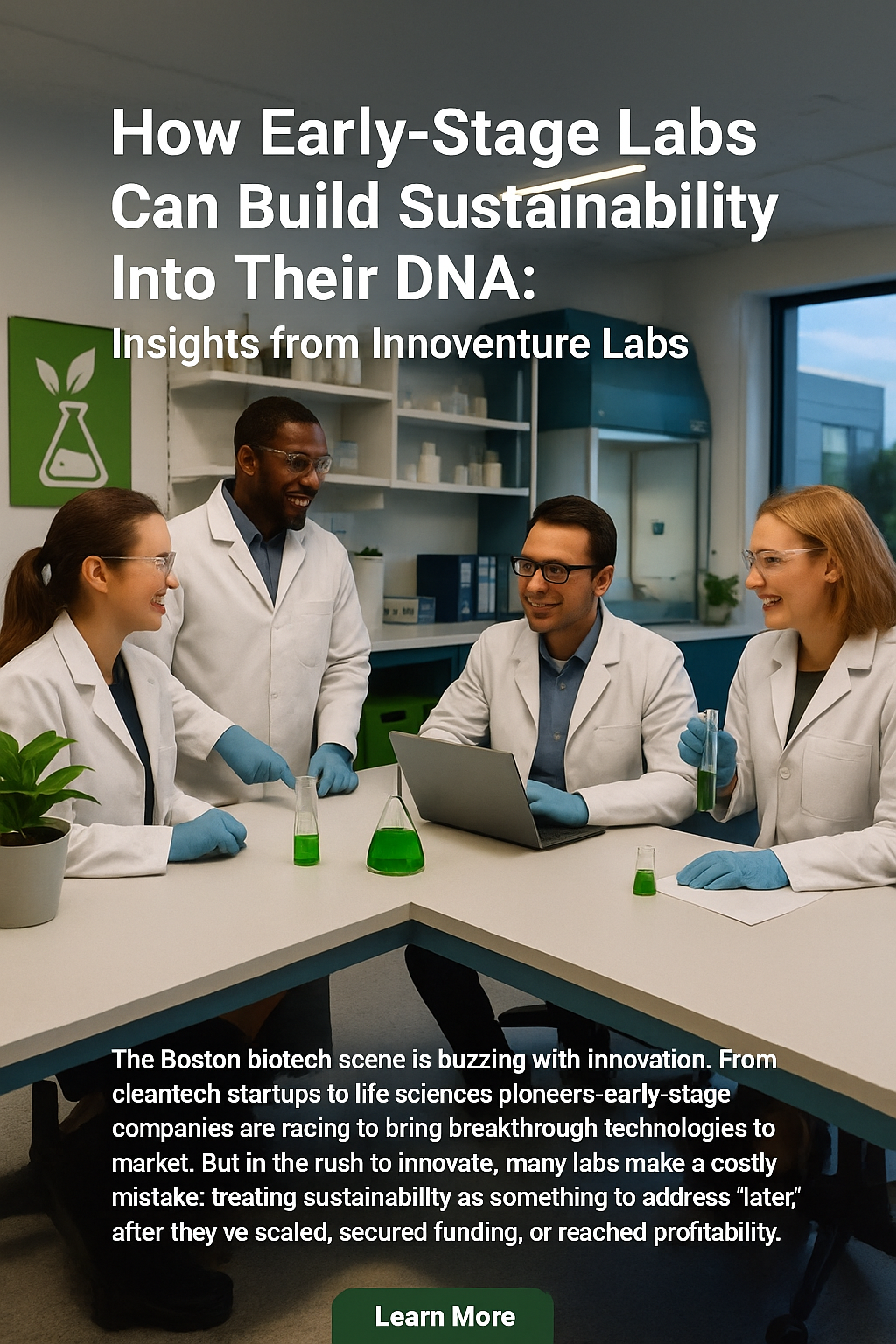Sustainable Lab Equipment: Smart Choices for a Greener Future
Sustainable Lab Equipment: Smart Choices for a Greener Future
.jpg)
Laboratory managers face a multitude of responsibilities, from managing budgets to maintaining equipment and meeting research demands. The added pressure to implement sustainable practices can seem daunting. However, adopting sustainable lab equipment isn't just an environmental imperative—it's a strategic decision that can positively impact both your research quality and financial bottom line.
This guide aims to provide clarity on making informed, sustainable equipment choices that benefit your lab and the planet.
Energy Efficiency: Optimizing Resource Utilization
Outdated, energy-intensive equipment can significantly drain resources and budgets. Consider these energy-efficient alternatives:
- Ultra-low temperature freezers: These models consume up to 70% less energy than traditional units. According to My Green Lab, replacing a single ultra-low temperature freezer with an energy-efficient model can save 20-30 kWh of electricity per day.
- Variable Air Volume (VAV) fume hoods: These sophisticated units adjust airflow based on usage, significantly reducing energy consumption during idle periods. The U.S. Department of Energy reports that VAV hoods can reduce energy use by up to 40% compared to constant air volume hoods. (Source)
- Precision-controlled incubators: Models with advanced insulation and precise temperature control maintain optimal conditions with minimal energy input.
- Centrifuges with regenerative braking: These units convert kinetic energy back into electrical energy, reducing overall power consumption.
It's crucial to note that energy efficiency extends beyond equipment selection. Proper staff training in equipment usage is essential to maximize efficiency and extend equipment lifespan.
Lifecycle Costs: Adopting a Long-Term Perspective
While initial purchase price is important, it's essential to evaluate the total lifecycle costs of laboratory equipment. Consider the following factors:
- Initial acquisition cost
- Projected energy consumption over the expected lifespan
- Anticipated maintenance and repair expenses
- End-of-life disposal or recycling fees
To illustrate, consider a scenario where a standard -80°C freezer costs $10,000, while an energy-efficient model is priced at $15,000. Over a decade, the energy-efficient model could potentially save $20,000 in energy costs, clearly demonstrating its long-term value.
For accurate comparisons, utilize the lifecycle cost calculator provided by the International Institute for Sustainable Laboratories. This tool facilitates data-driven decision-making when evaluating equipment options.
Sustainable Alternatives: Impactful Substitutions
Laboratory consumables contribute significantly to waste generation. Consider these more sustainable alternatives:
- Reusable glassware in place of disposable plastics (where safety permits)
- Washable cloth wipes as an alternative to paper towels
- Recyclable pipette tip boxes
- Biodegradable laboratory notebooks and writing implements
Engaging your team in identifying additional sustainable alternatives can lead to innovative solutions and foster a culture of environmental responsibility.
The Environmental Protection Agency's ENERGY STAR program offers guidelines for selecting energy-efficient lab equipment and implementing sustainable practices.
Shared Equipment Programs: Maximizing Resource Efficiency
Implementing shared equipment programs can significantly reduce energy use and costs:
- Conduct an audit to identify underutilized equipment within your facility.
- Develop an efficient booking system for shared access.
- Implement comprehensive training programs for all users.
- Establish a rigorous maintenance schedule to ensure optimal performance of shared equipment.
An additional benefit of shared programs is the potential for increased collaboration between research groups, fostering interdisciplinary innovation.
Evaluating Vendor Claims: Ensuring Genuine Sustainability
With the proliferation of "green" marketing, it's crucial to critically evaluate vendor claims:
- Request specific data on energy efficiency and environmental impact. • Look for credible third-party certifications such as ENERGY STAR or ACT Label. • Seek case studies from laboratories with similar requirements and usage patterns. • Investigate the vendor's own sustainability practices and commitments.
It's essential to base decisions on concrete evidence rather than marketing rhetoric. Thorough due diligence can prevent misallocation of resources on equipment that doesn't deliver on its sustainability promises.
Your Role in Shaping Sustainable Science
As a laboratory manager, your equipment decisions have far-reaching implications. Each choice impacts not only your immediate research environment but also contributes to the broader scientific community's environmental footprint.
For those looking to extend their impact beyond their own laboratory, consider supporting organizations like LabRenew. These entities are at the forefront of transforming scientific research through sustainable practices, and your contribution can help drive innovation in green science.
Remember, sustainability in laboratory settings is not an abstract concept but a series of practical, daily choices. By making informed decisions about equipment and practices, you play a crucial role in shaping a more sustainable future for scientific research.
Your expertise and choices have the power to influence the trajectory of both your research and our planet's well-being. Embrace this responsibility and let it guide your equipment decisions towards a more sustainable and efficient laboratory environment.
.jpg)

